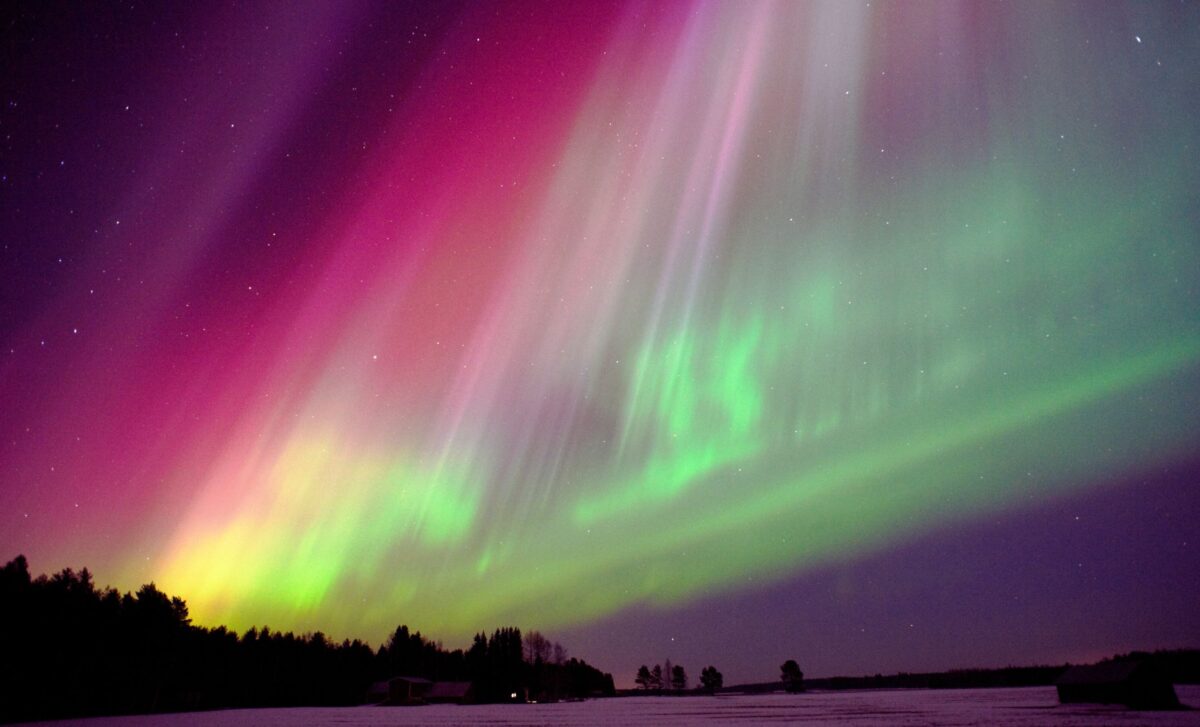
Northern Lights Alert: Auroras Set to Illuminate the Skies Across 18 U.S. States This Weekend
How did your country report this? Share your view in the comments.
Diverging Reports Breakdown
Northern Lights Alert: Auroras Set to Illuminate the Skies Across 18 U.S. States This Weekend
The northern lights, or auroras, are set to put on an extraordinary show for skywatchers across parts of the United States this weekend. As Earth experiences turbulent space weather, including a solar storm that struck on June 12-13, the aurora oval, the region where the lights typically form, may shift further south than usual. This is a rare opportunity for sky enthusiasts in states that don’t often see the Aurora to catch a glimpse of the vibrant phenomenon. The best time to witness the northern lights is typically between 1-2 a.m., when the sky is darkest. Clear skies are essential for seeing the lights, but thick cloud cover can obscure them. For the best viewing experience, head to a dark, north-facing location away from city lights. As we approach the summer solstice on June 20/21, the nights grow shorter, so you’ll need to catch the northern Lights in the early morning hours to have a good chance of seeing them.
18 U.S. States Could Witness the Aurora Tonight and Over the Weekend
According to NOAA’s Space Weather Prediction Center (SWPC), the effects of the solar storm, along with a co-rotating interaction region (CIR) in the solar wind, are expected to bring the northern lights to a wider swath of the northern U.S. than normal. The NOAA SWPC has issued a moderate (G2) geomagnetic storm warning for June 14, meaning that the aurora oval could extend further south, potentially visible in areas as far south as Wyoming and New York.
The 18 states most likely to catch the show include:
Alaska
Montana
North Dakota
Minnesota
Wisconsin
Michigan
South Dakota
Maine
Vermont
New Hampshire
Idaho
Washington
Oregon
New York
Massachusetts
Connecticut
Rhode Island
Wyoming
Aurora forecast for tonight courtesy of the NOAA Space Weather Prediction Center. (Image credit: NOAA Space Weather Prediction Center)
How Geomagnetic Storms Cause the Northern Lights to Be Visible Farther South
Geomagnetic storms are triggered by disturbances in Earth’s magnetic field, often caused by solar winds or solar storms. When a solar storm reaches Earth, it disrupts the magnetic field, creating what is known as a geomagnetic storm. These storms are ranked on a G-scale, ranging from G1 (minor) to G5 (extreme). A G2 storm, which is moderate, has enough force to push the aurora oval—usually concentrated near the poles—further south, creating an opportunity for skywatchers in northern regions of the U.S. to view the phenomenon.
On June 12-13, a moderate G2 storm struck Earth, with a subsequent CIR—a region in the solar wind where fast-moving particles collide with slower-moving ones—expected to affect space weather conditions around June 14. This turbulent space weather has made it likely that 18 U.S. states will experience northern lights over the coming days.
Ideal Conditions for Viewing the Northern Lights
While the geomagnetic activity itself is a crucial factor for aurora visibility, other conditions can impact your chances of seeing the lights. The best time to witness the northern lights is typically between 1-2 a.m., when the sky is darkest. However, there are several other factors to consider:
Cloud Cover: Clear skies are essential for seeing the aurora. Even if the geomagnetic conditions are right, thick cloud cover can obscure the lights.
Clear skies are essential for seeing the aurora. Even if the geomagnetic conditions are right, thick cloud cover can obscure the lights. Light Pollution: For the best viewing experience, head to a dark, north-facing location away from city lights.
For the best viewing experience, head to a dark, north-facing location away from city lights. Shorter Nights: As we approach the summer solstice on June 20/21, the nights grow shorter, so you’ll need to catch the northern lights in the early morning hours to have a good chance of seeing them.
Tracking the Space Weather and Northern Lights
For those eager to track space weather and get the latest updates on when and where the aurora may appear, there are several apps available that offer real-time forecasts. Two popular options include “My Aurora Forecast & Alerts” and “Space Weather Live”. Both apps allow users to check the likelihood of auroras based on their location, ensuring they don’t miss the celestial light show. Additionally, NOAA provides a comprehensive and experimental tool, the Aurora Viewline tool, which allows users to track the likelihood of auroras and view the regions most affected by space weather in real time.
Source: https://dailygalaxy.com/2025/06/northern-lights-18-u-s-states-this-weekend/
